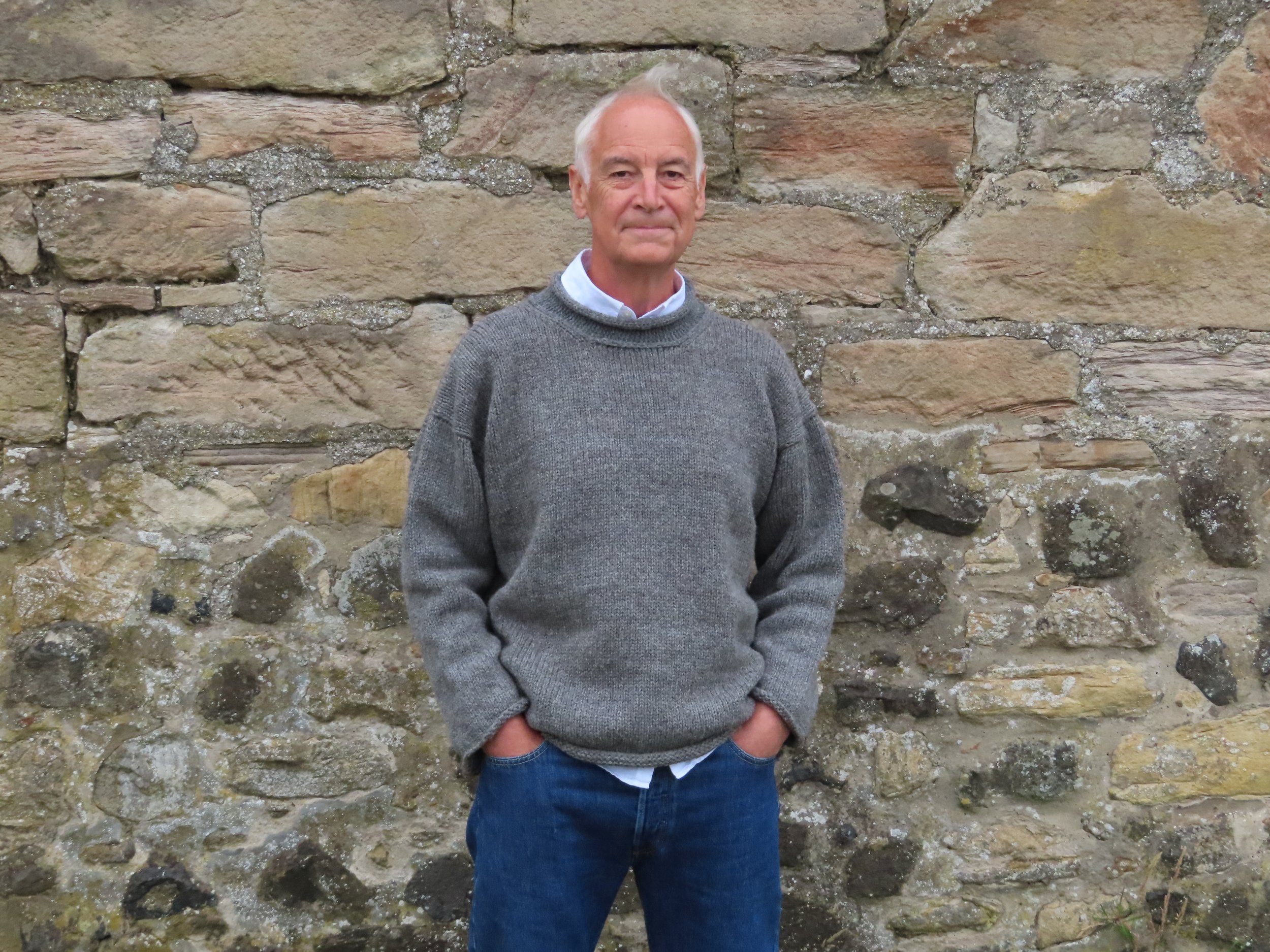The Vintage Years: How Nature Writes Our Shetland Vintage
1
There is something uniquely captivating about watching a textile come to life.
Whether it’s the steady looping of stitches forming row after row as a jumper begins to take its shape or the unfurling of embroidery—where different coloured threads slowly reveal the sewer’s intended pattern—it feels like a certain kind of magic. An art form: the transformation of a vision into reality, something that once existed only as an idea, intangible and incomplete.
That process holds true for Future Vintage. Designs begin on paper, sometimes on the back of envelopes, often scattered across the floor of my 200-year-old cottage atelier at Bonnytoun Farm. In the evolution from pattern to piece, the next stage is sampling, before the time-consuming dance of testing, adjustment, testing, adjustment. Followed by alterations, as many as necessary – as long as a piece of string – before the garment finally emerges.
It's a real labour of love. But the true beginning of our story starts much earlier. Long before putting pen to paper, feeling the flow of fabric or the spin of that year’s yarn. When working with natural fibres like pure Shetland wool, the journey from concept to closet doesn’t begin with a pattern, a thread, or any workable material at all. It begins with something alive—something real, breathing, and of course, something that is yet to be born.
Curating the Flock: The Beginning of Our Vintage Story
Every Future Vintage collection begins with the earth and grass in the fields. The colour, texture, and unique genetic makeup of the future fleeces—still so unknown at this early stage—hold the promise of what will one day become our knitwear.
Each of our pedigree Shetland sheep is individually tagged so we can trace and identify them at a distance and, come springtime, follow their lambs’ lineage. The ewes are split by parentage into two groups in separate fields. We make sure each group comprises all colours of fleece: white, moorit (a rich, earthy brown), black, and katmoget (a striking grey blend). Then we introduce the ram – just one ram is needed to ‘cover’ each field of 50 ewes – and let nature take its course.
The ram plays a pivotal role in determining the colour of that year’s fleeces and therefore the aesthetic of my collection. It’s a crucial decision—should he be jet-black? Flecked with white? Or boast a deep moorit brown? Together with Ben, my husband, our annual flock sorting and selection of the ram marks the very essence of my next collection— and what we call that year’s “Vintage.”
A Collectable Shepherd’s Wardrobe Rooted in the Land
Just as an especially good year for grapes creates an exceptional vintage – each of my collections is shaped not only by that careful selection but by the conditions in which the sheep are reared.
The quality of the wool is affected by the age of the sheep. Our young sheep have the softest fleece – their coats still relatively unscathed by life in the Scottish outdoors. The first shearing brings exceptionally high-grade Shetland yarn. It will go on to be blended with the older sheep’s fleeces. The quality will become more homogenous, but the age makeup of the flock will always affect the overall quality. This spring, we are hoping to have over 100 lambs, which excitingly, promises to next year’s yarn super soft.
Temperature peaks and troughs can also change things. During a harsh, bitter winter, shearing might be delayed, allowing our sheep to retain their thick, insulating fleece for protection against the cold. A milder season may see us shear earlier, capturing a softer, lighter texture. Sheep ‘roo’ in warm weather, so for us, shearing in early summer tends to be preferable before they naturally start to shed their fleece.
Then, you need to add in just one more variable – the rain. Shearing must be done outside since doing it indoors can leave the fleece strewn with straw. This would make the sorting process even more laborious than it already is, so we can only really shear the sheep on a fine day.
However painstakingly unpredictable that process may sound, it is, in fact, the unparalleled beauty of crafting a shepherd’s wardrobe entirely from our Shetland sheep’s wool.
The method is entirely inseparable from the land, the seasons, and the rhythms of nature itself. It’s a connection that brings with it something deeply personal for the wearer: a sense of belonging, an emotional tie to Scotland, and a close association with its rich cultural and textile heritage.
For each year’s yarn is utterly inimitable—a product of its time, its flock, and its environment. It simply cannot, and will not, exist again. Every piece born from it is individual in colour, texture, and volume, making it not just a garment but a collectable, limited-edition work of art—future vintage, treasured for a lifetime.
We preserve just a single wheel of thread, ensuring we can carefully repair your garment with the matching fibre, should the years of wear begin to show along the seams of your jumper, dress, or vest.
A Story Woven for Generations
In a world of fleeting trends and mass production, I’m so proud that Future Vintage stands apart—rooted in the Scottish land, shaped by nature, and crafted with care. Each piece holds the essence of its origins: the flock, the seasons, and the hands that shaped it.
And while the threads of this year’s Vintage are unique, the chapters continue—year after year, season after season. Because here at Bonnytoun Farm, we believe that the most enduring luxury is the one that brings us back to what truly matters: connection—to nature, to heritage, and to the things we hold dear.
It is our privilege to offer you a part of that story, one stitch, one fibre, one treasured piece at a time.























